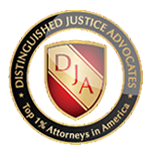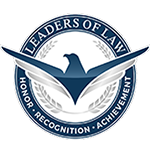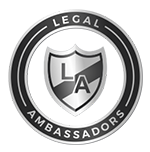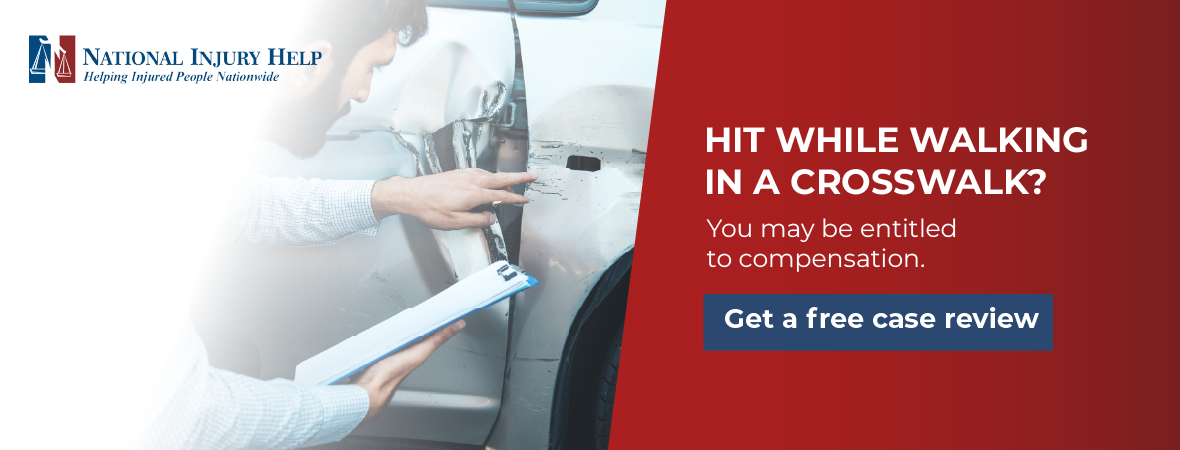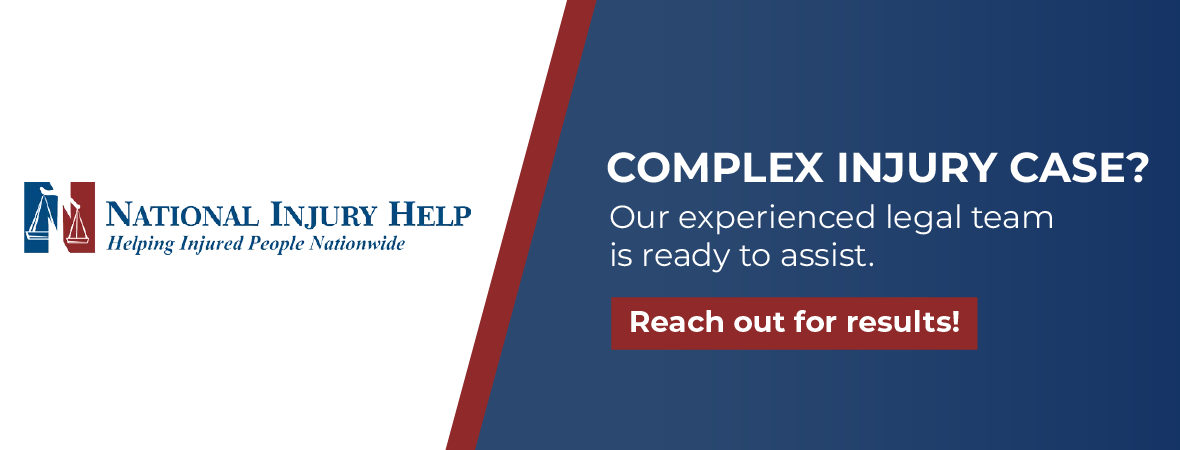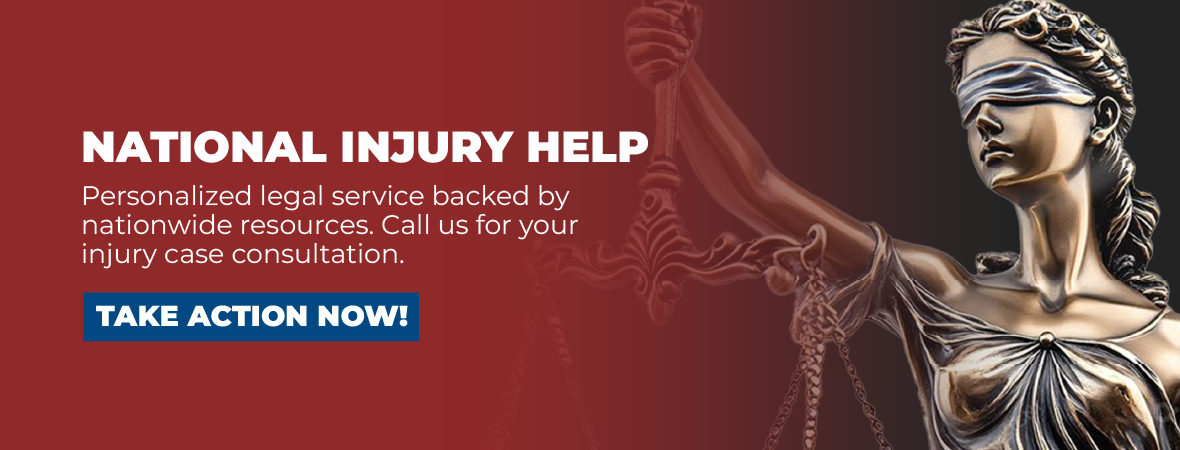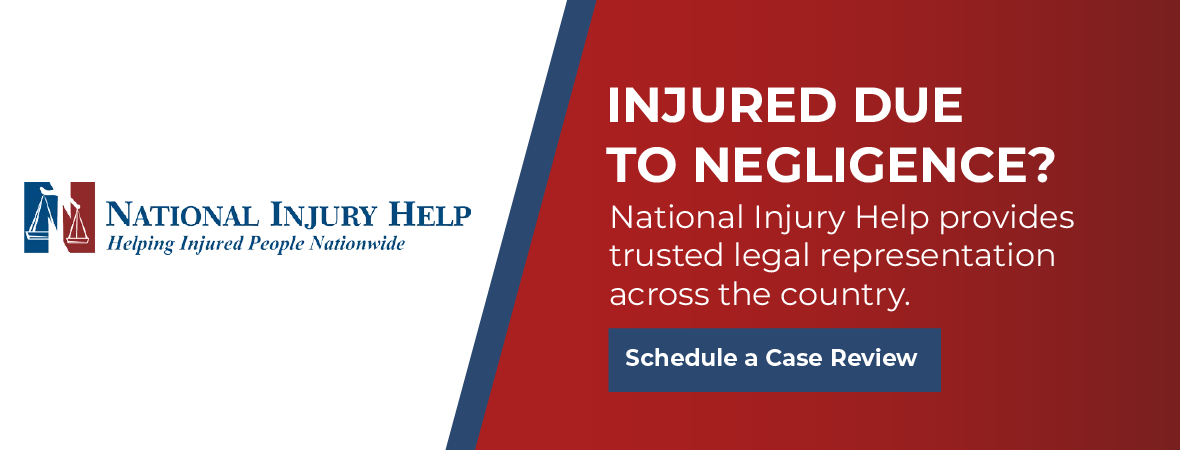Accidents involving Uber or Lyft in Peoria can lead to confusing insurance claims and serious injuries. Contact National Injury Help by calling 1 (800) 214-1010 today.
Rideshare crashes are more complex than ordinary fender benders. Several insurance layers might apply, each with its own rules about when coverage starts and stops. One insurer may claim the driver’s personal policy should pay. Another may argue that the company policy is responsible only if a passenger was in the car.
Passengers hurt inside the rideshare, pedestrians hit while crossing the street, and other motorists struck by an Uber or Lyft driver often discover that filing a claim involves more than swapping insurance cards.
Arizona law adds one more layer of complexity. The state treats rideshare drivers as independent contractors, not employees, and sets different rules for each moment the app is on or off. A local Peoria rideshare accident lawyer understands how to sort through those details.
Our job is to gather every piece of evidence, identify every responsible party, and push insurance carriers to pay full and fair compensation for your medical costs, lost wages, pain, and future care.
Let us fight for you while you focus on healing and getting your life back on track. Call us today for a free consultation with no further obligations.
Types of Rideshare Accidents We Handle
Our office assists clients who fit into several categories.
Passenger Injured in an Uber or Lyft
Some victims are paying passengers who trusted the driver and the platform. You might have been on your way to a spring training game when a distracted driver rear-ended the car at a stoplight, or you could have been waiting curbside when another vehicle collided with your rideshare before you stepped inside. Whether the crash happens during the ride or pickup, the legal issues start with proving the driver’s app status and linking your injuries to the collision.
Hit by a Rideshare Driver as a Driver or Pedestrian
Other clients come to us after being struck by an Uber or Lyft vehicle while they were behind the wheel of their own car or while they were walking across an intersection near a busy drop-off zone outside the P83 Entertainment District.
These cases often involve sudden lane changes, rushed turns, or distracted driving as the rideshare operator checks navigation directions on the phone screen.
Rideshare Driver Injured by Another Vehicle
Sometimes, the rideshare driver is the one who suffers injuries because another motorist fails to yield or runs a red light. The driver may need help dealing with the personal insurance carrier, the rideshare company policy, and any underinsured motorist coverage all at once.
Multi-Vehicle Accidents Involving a Rideshare Car
Heavy traffic on Loop 101 can produce chain reactions that involve three or more vehicles. When a rideshare car sits among them, each insurance company points at the others. Sorting out fault percentages requires precise investigation, and negotiations can stretch across several carriers.
Assaults or Unsafe Conditions Caused by a Rideshare Driver
A small subset of claims involves assaults or reckless behavior by a driver. These incidents include physical altercations, harassment, or dangerous driving that causes injury without a direct crash. Liability questions look different in these cases, yet victims still have the right to compensation.
Peoria Rideshare Accident Lawyer Explains Arizona Laws Governing Rideshare Accidents
Arizona sets out specific regulations for rideshare companies and their drivers.
Rideshare Classification in Arizona
Arizona law defines Uber and Lyft operators as independent contractors. Because they are not employees, the companies often deny direct responsibility for driver negligence. Yet, plaintiffs can still reach company insurance coverage during certain periods, and sometimes other legal theories, such as negligent hiring, may apply.
State Insurance Requirements for Rideshare Companies
When the app is off, only the driver’s personal auto policy applies. Once the app is on and the driver is waiting for a ride request, Arizona requires a minimum of twenty-five thousand dollars per person and fifty thousand per accident for bodily injury, plus twenty-five thousand for property damage.
When the driver accepts a ride or carries a passenger, Uber and Lyft must provide up to one million dollars in liability coverage, along with uninsured and underinsured motorist protection.
Comparative Negligence in Arizona
Our state follows a pure comparative negligence system. If an injured person is partly responsible, the court reduces compensation by that percentage but does not bar recovery. Even if you are forty percent at fault, you may still collect sixty percent of your damages.
Statute of Limitations
Arizona gives injured parties two years from the date of the accident to file a lawsuit. Claims against government entities have shorter notice periods. Missing the deadline usually ends the right to compensation, which is why fast action matters.
Peoria Rideshare Accident Lawyer Explains The Matter of Liability in a Rideshare Accident in Peoria?
The answer depends on who bears the responsibility of the crash and the app’s status at the time of the accident.
Determining Who Was at Fault
The first step in any accident claim is identifying who caused the crash. Arizona uses a fault-based system, which means the person (or people) who caused the accident is legally responsible for paying for the damages.
To determine fault, investigators typically look at:
- Police reports created at the scene
- Statements from passengers and witnesses
- Video from traffic cameras, dash cams, or nearby businesses
- Vehicle data from electronic control modules (also called black boxes)
In some cases, the rideshare driver may be at fault. For example, they might have run a red light while rushing to pick up a passenger. In other situations, another driver may have hit the rideshare vehicle. It is also possible for both drivers to share blame, such as in a situation where one driver was speeding and the other made an improper turn.
Under Arizona’s comparative negligence rules, more than one person can be held responsible. If multiple drivers contributed to the crash, each one may owe a percentage of the damages based on their share of the fault.
Insurance Scenarios for Different Rideshare App Periods
Rideshare companies like Uber and Lyft carry large insurance policies, but those policies are not always ‘‘on’’ and only apply during specific times. The amount of coverage depends on whether the driver was using the app and what stage of the trip they were in. These stages are usually broken into three periods:
Period 0: App Off
If the rideshare driver is not logged into the app at the time of the crash, the rideshare company has no responsibility. In this scenario, the driver is considered to be operating their vehicle for personal use.
Only the driver’s personal auto insurance will apply. If they do not have enough coverage to pay for the damages, you may have to explore underinsured motorist coverage or other options.
Period 1: App On, No Ride Accepted
If the driver is logged into the app and waiting for a passenger request but has not yet accepted one, a limited rideshare insurance policy applies. This policy includes:
- Up to $50,000 per person for bodily injury
- Up to $100,000 per accident for bodily injury
- Up to $25,000 for property damage
This rideshare coverage only kicks in if the driver’s personal insurance does not apply or is insufficient. It serves as a backup, not the first line of coverage.
Period 2 and 3: Ride Accepted, or Passenger in Vehicle
Once the driver accepts a ride request or has a passenger in the car, the full $1 million commercial liability policy becomes active. This covers injuries and property damage resulting from the driver’s negligence.
In addition to liability coverage, this phase may also include uninsured or underinsured motorist coverage and contingent collision coverage (if the driver has collision coverage on their personal policy). This is the highest level of protection available and often makes rideshare claims more financially secure during active trips.
Third-Party Liability
Sometimes, the at-fault party is not the rideshare driver but another motorist on the road. In that case, the other driver’s insurance is the first source of compensation. This would include any bodily injuries or property damage caused by that third party.
However, there is a common problem: the other driver’s insurance policy may not cover the full amount of your losses. Many Arizona drivers carry only the minimum required liability coverage, which is often not enough to cover serious injuries. If your injuries and expenses exceed the other driver’s insurance limits, you may still be able to tap into the rideshare company’s insurance.
This type of supplemental coverage can be critical when multiple people are injured in the same crash or when a pedestrian or cyclist is hit by a rideshare vehicle.
Uninsured or Underinsured Rideshare Drivers
Another possible complication arises when the rideshare driver does not carry enough personal insurance. This can be a concern during Periods 0 or 1, when the rideshare company’s coverage is limited or non-existent.
To address this, most major rideshare companies provide uninsured/underinsured motorist (UM/UIM) coverage during active trips. This means that if the at-fault driver is unknown (such as in a hit-and-run) or lacks sufficient coverage, the rideshare company’s policy may still pay for your injuries.
Accessing these benefits typically requires you to prove that:
- The at-fault driver fled the scene and cannot be identified
- The at-fault driver’s policy is too small to cover all damages
- The rideshare driver’s personal policy is invalid or has lapsed
Collecting this type of compensation requires strong documentation and fast action. An attorney can help secure traffic footage, police records, and witness statements before they disappear.
Steps to Take After a Rideshare Accident in Peoria
Knowing the right steps to take after being involved in a rideshare accident makes future recovery smoother and eases a lot of the early stress and uncertainty.
Call 911 and Get Medical Help
Dial emergency services right away. Paramedics protect spinal alignment and measure vital signs. The police crash report captures date, time, location, and initial fault statements that insurers rely on later.
Gather Contact Information
Collect names, addresses, driver’s license numbers, and insurance details for every driver. Ask witnesses for phone numbers. Accurate contact data prevents delays when adjusters begin their reviews.
Screenshot App Activity
Take images of the ride screen that show driver name, license plate, trip status, and timestamps. These shots prove that you were an active passenger or that the driver had the app on, which determines insurance coverage.
Avoid Insurance Calls Without Legal Advice
Adjusters often request a recorded statement within days. Politely decline or provide only basic facts until you consult an attorney who can manage questions and prevent accidental mistakes.
Contact a Rideshare Accident Lawyer Promptly
A lawyer sends preservation letters to Uber, Lyft, and drivers, ensuring that electronic trip logs, dash-cam footage, and black-box data stay intact. Early legal help also coordinates with doctors to document injuries thoroughly.
Types of Compensation an Experienced Peoria Rideshare Accident Lawyer Can Secure for Victims
Arizona law allows for several forms of damages to be included when calculating the final compensation amount.
Medical Bills
Compensation covers ambulance transport, emergency treatment, surgeries, hospital stays, physical therapy, prescription medication, and any assistive devices like wheelchairs or neck braces. Future procedures, such as hardware removal or scar revision, also belong in the claim.
Lost Wages
Time away from work during recovery leads to immediate income loss. Long-term impairments like chronic pain or reduced stamina can limit career growth or force a change of occupation. Economic experts calculate the gap between pre-injury earning potential and post-injury reality.
Pain and Suffering
Physical pain, emotional distress, sleep disruption, and reduced enjoyment of daily hobbies have value in Arizona courts. Journals that track pain levels and therapy notes that describe anxiety help put a clear figure on this intangible loss.
Property Damage
If you were driving your own car when the rideshare vehicle hit you, repair or replacement costs belong in the claim. Passengers may need to pay for smashed phones, broken glasses, or damaged laptops.
Future Costs
Serious injuries often lead to long and painful rehabilitation journeys. Projected costs include additional surgeries, at-home nursing, mental health counseling, and adaptive equipment like ergonomic workstations or vehicle hand controls.
How a Peoria Rideshare Accident Attorney Can Help
We will guide your case from start to finish.
Identify All Liable Parties
We analyze police reports, consult accident reconstruction engineers, and review app logs to determine whether the Uber driver, a third-party driver, both, or even the rideshare platform itself holds responsibility.
Navigate Insurance Complications
Multiple insurers often point fingers at each other. We track policy limits, coverage periods, and exclusions. We submit claims in the correct order, reducing delays and avoiding gaps in payment.
Build a Strong Case
Medical documentation shows injury extent. Reconstruction graphics explain crash physics. App records prove driver status. Together, these elements create a timeline from the moment of impact to the present, making it hard for insurers to dismiss your losses.
Negotiate or Litigate if Needed
Many claims settle through negotiation once the evidence stands strong. If the carrier refuses fair value, we file a lawsuit in Maricopa County Superior Court, take depositions, and prepare expert witnesses. Trial-ready posture often encourages higher offers before a jury hears the case.
Work on Contingency
Our fee comes as a percentage of the final settlement or verdict. You pay no legal fees unless we recover money for you. This arrangement aligns our interests and lets you focus on healing rather than invoices.
Contact a Peoria Rideshare Accident Lawyer
Rideshare services like Uber and Lyft have changed how we travel, but accidents involving these vehicles can quickly become complicated. If you were injured in a rideshare crash in Peoria or surrounding areas like Glendale, Surprise, or Sun City, you may be facing a maze of insurance claims and unanswered questions.
At National Injury Help, we are here to provide clarity, support, and aggressive legal representation for anyone who has suffered a Lyft passenger injury in Peoria.
Whether you were a rideshare passenger, another driver, a pedestrian, or a cyclist, your injuries deserve attention and fair compensation. Rideshare companies are backed by large insurance policies, but getting access to that coverage often requires legal experience and persistence. Our team knows how to investigate the crash, secure app data, request dashcam or street footage, and deal with multiple insurance providers.
We offer free consultations, so there is no cost to speak with an experienced Peoria rideshare accident lawyer. You pay us nothing unless we win your case. Our goal is to take the stress off your shoulders while we fight for the compensation you deserve for medical bills, lost income, pain, and suffering.
If you were hurt in an Uber or Lyft accident, do not delay. Valuable evidence can disappear quickly, and strict legal deadlines apply. Let us act now to protect your rights.
Call 1 (800) 214-1010 today to talk with an Uber crash attorney who understands the complexity of rideshare claims. We are ready to stand with you and guide you through every step of the legal process.



